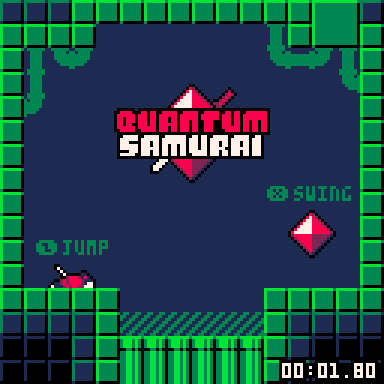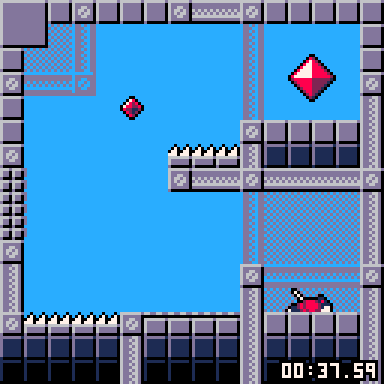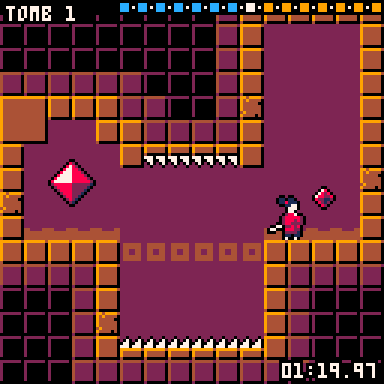
2020
1
Quantum Samurai
/ overview
Quantum Samurai is a small 2D platformer game I made for fun in 2020-2021. I was attempting to learn to program using the PICO-8 fantasy console, which uses a version of Lua and has a number of interesting but intentionally annoying restrictions (e.g. limited colours, level sizes, sprite sheet size, total lines of code, etc.)
The player is a samurai who needs to attack a specific object in each level to progress, with each level taking up the same 16x16 tile room. The game is foddian, and moves the player to the previous level at their current position any time they die (the titular "quantum" aspect).
/ play
/ controls
/ work
-
Z - Jump
-
X - Swing
-
Left/Right Arrows - Move
-
mechanics design
-
level design
-
programming
-
sprites
-
audio

/ outcomes
Quantum Samurai was one of my first attempts at creating a complete, polished game, and in a language I hadn't done much work in previously. Some key take aways that I learned while working on it were the following:
-
2D platformer fundamentals (input buffering, coyote time, etc.).
-
Optimisation with limited resources and restrictions.
-
Writing 2D collision detection from scratch.
-
Complex forward-thinking level / puzzle design.
-
Basic 2D spriting and animation.
/ details
Quantum Samurai was a tricky test in level design, requiring a lot of planning and forethought with the placement of every goal (the objects transitioning you to the next level) and every hazard (which push you back a level).
For example, there should never be an instance where a hazardous spike would send you into a wall into a previous level, just because it happened to be in a suboptimal location.
Even with limited space for sprites and code, I tried to make every set of levels as unique as possible, focusing on making them both aesthetically and mechanically distinct.


Factory Levels

Tomb Levels

Hell Levels
For instance, the factory levels make use of these fast conveyors, the tomb levels use numerous timed switch blocks, and the hell levels have multiple exits that need to be weaved between in a particular order (which ended up being the hardest levels to plan overall).